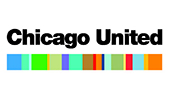
Inside Inclusion featuring the Corporate Diversity Profile
Challenge
Since 2004, on a biennial schedule, Chicago United has released the most complete review of the status of diversity and inclusion progress in Chicago's top corporations. Inside Inclusion presents the current state of diversity in the executive ranks of Chicago corporations and provides an assessment scorecard to track and identify steps forward for corporations in their diversity and inclusion efforts.
Actions
Chicago United works with Parker Williams Consulting and EY to compile demographics research of inclusion of the boards of directors and C-suites of the top 50 Chicago companies against the benchmark of Chicago United member companies that are in the top 50. Working with an expert from the Federal Reserve Bank of Chicago, the report also illuminates current trends impacting the executive suites and talent pipeline; the 2018 report includes a chapter on immigration. The report also includes a "toolkit" that provides leaders with workable tips and frameworks relevant to diversity and inclusion. The process of producing the report from start to publication is more than six months.
Outcomes
Findings of the report include:
Within the top 50 Chicago companies, changes from 2012 to 2018 have been minimal:
- There have been modest gains in minority representation at the board level in the last six years.
- Minority representation in the C-Suite grew by one percentage point between 2012 and 2014 and another percentage point between 2016 and 2018.
- African American and Hispanic representation in the Chicago Top 50 went up one percentage point each between 2016 and 2018 and decreased by a percentage point during this time period for Asians.
Comparison between Chicago United member companies and non-member companies in the Chicago Top 50:
- Overall minority representation on boards and in the executive ranks is higher in Chicago United member companies.
- When looking at the break-downs for minority representation, African Americans and Hispanics make up a larger percentage of the boards and executive ranks in Chicago United member companies. However, Asian directors and executives have a slightly higher percentage of representation in non-member companies.
Comparison of local to national statistics:
- Representation of ethnic minorities in the Chicago Top 50 companies in 2018 is closer to national benchmarks at both the board level and executive ranks, except for Asian executives where more representation is shown nationally.
- U.S.-born participation in the labor force is declining due to aging Baby Boomers; while immigrants coming into the U.S. labor force are of prime working age.
- Immigrants from Asian countries have become the fastest growing foreign-born group in the country.
- Immigration of Hispanics ( especially from Mexico) has been curbed in recent years, and as a result, both the population of newly arriving Hispanic immigrants, and the number of those employed, have somewhat declined.
Contact
Kimberly Crooms, Director of Communications
Quote
This edition of Inside Inclusion coincides with the celebration of Chicago United's 50th year. Much progress has been made from the time of our founding, when corporate employment opportunities were first opened to people of color, to our current focus on advancing multiracial leadership in corporate governance, executive-level management, and business diversity. In this 50th anniversary year, we are an organization of 100 members dedicated to ensuring people of diverse backgrounds, experiences and strengths participate at every level of business and leadership. I encourage all publicly and privately held corporations in Chicagoland to join the pursuit of diversity and inclusion with intent. Together we can transform Chicago into the most inclusive business ecosystem in the nation.